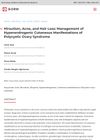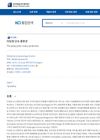Polycystic Ovary Syndrome in Childhood: Diagnostic and Therapeutic Challenges
July 2015
in “
NEJM Journal Watch
”
Polycystic Ovary Syndrome PCOS oligomenorrhea hyperandrogenism polycystic ovaries acne hirsutism androgenic alopecia acanthosis nigricans seborrheic dermatitis impaired glucose tolerance obesity decreased fertility endometrial cancer cardiovascular complications oligoovulation anovulation Rotterdam criteria

TLDR Diagnosing and treating PCOS in young people is difficult.
Eight years ago, a review by Mary Wu Chang, MD, highlighted the challenges in diagnosing and managing Polycystic Ovary Syndrome (PCOS) in children and adolescents. PCOS, an endocrine disorder characterized by oligomenorrhea, hyperandrogenism, and polycystic ovaries, has dermatologic manifestations such as acne, hirsutism, androgenic alopecia, acanthosis nigricans, and seborrheic dermatitis. It is associated with impaired glucose tolerance, obesity, decreased fertility, pregnancy complications, increased risk for endometrial cancer, and possibly cardiovascular complications. Diagnosis requires two of the three Rotterdam criteria: oligoovulation or anovulation, clinical/biochemical signs of hyperandrogenism, and polycystic ovaries on ultrasound. If a suspected diagnosis cannot be confirmed, a provisional PCOS diagnosis should be made to ensure ongoing monitoring and interventions to reduce obesity.






